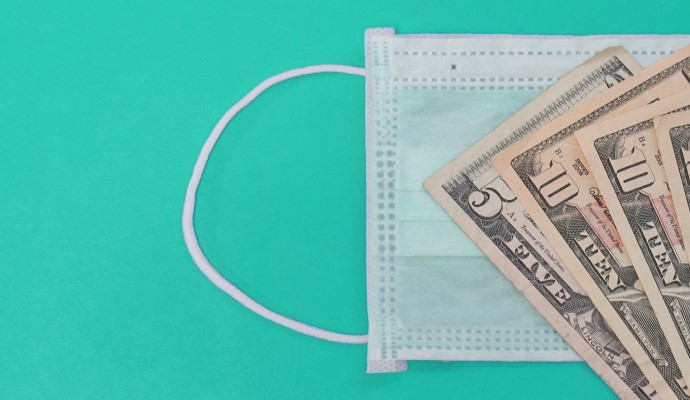Hospital Operating Margins Still Negative After Omicron Surge
Hospital operating margins have remained negative for the second consecutive month, with health systems still seeing revenue and patient volume declines following the Omicron surge.

Source: Getty Images
- As COVID-19 cases and hospitalizations decreased, hospitals and health systems experienced temporary expense relief in February 2022, but operating margins were still negative and gross operating revenue declined, according to Kaufman Hall’s National Hospital Flash Report.
The Kaufman Hall report includes actual and budget data from more than 900 hospitals. The recent data reflects hospital performance during February 2022.
COVID-19 cases and inpatient hospital volumes declined after the Omicron surge peaked in mid-January. But hospital operating margins remained negative for a second consecutive month.
“2022 is off to a very difficult start for our nation’s hospitals and health systems,” Erik Swanson, senior vice president of Data and Analytics at Kaufman Hall, said in a press release. “Margins, revenues, and inpatient volumes declined for most organizations in February, while outpatient care signaled only slow returns. The metrics indicate a challenging recovery from the Omicron surge in the coming months.”
The median Kaufman Hall Operating Margin Index for February margins was -3.45 percent, increasing slightly from January’s -4.52 percent, but still significantly below sustainable levels, the report said.
The majority of hospitals reported margin declines in February, bringing the median month-over-month change in operating margin down 11.8 percent. The median change in operating earnings before interest, taxes, depreciation, and amortization (EBITDA) margin decreased 7.5 percent from January to February.
Compared to February 2021 performance, the median change in operating margin was down 26.7 percent, and the median change in operating EBITDA margin decreased by 24.3 percent.
Margins saw the most drastic changes when comparing February 2022 figures to margins before the pandemic. The median operating margin change was down 42.4 percent, and the operating EBITDA margin change was down 37.5 percent.
Hospitals experienced revenue declines in February as well, the report highlighted. From January to February, gross operating revenue declined 7.4 percent. Compared to the same time last year, gross operating revenue was up by 7.8 percent and up by 5.7 percent compared to before the pandemic.
The report suggested that shifts in hospital volumes likely contributed to the month-over-month revenue decline. The seven-day average of new COVID-19 cases dropped 92 percent from January to February. The seven-day average of new daily admissions also decreased by 79 percent.
Patient days declined 13 percent month-over-month and 4.7 percent compared to before the pandemic. Patients also saw shorter hospital stays with the waning of Omicron, with the average length of stay dropping 5.3 percent from January. Length of stay was up by 3.6 percent year-over-year, though.
Declines in inpatient volumes lead to a 19.3 percent decrease in inpatient revenue from January to February. In contrast, from December 2021 to January 2022, inpatient revenue had increased by 3 percent after the surge in COVID-19-related hospitalizations.
Outpatient volumes and revenues remained low in February, though surgery volumes saw slight increases with some patients returning for non-urgent procedures that were delayed during the Omicron surge. For example, operating room minutes increased 6.5 percent from January to February. However, emergency department visits declined 17.4 percent during the same time.
As a result, outpatient revenue decreased 5 percent month-over-month but was up 9.3 percent compared to February 2021.
Hospitals saw temporary expense relief due to the drastic fall in COVID-19 cases following the Omicron surge. Total expense per adjusted discharge declined 4.5 percent in February. Labor expense per adjusted discharge fell 6.1 percent, and non-labor expense per adjusted discharge decreased 3.6 percent.
However, year-over-year adjusted expenses were up in February due to high levels of staffing shortages and ongoing supply chain issues, the report noted. Total expense per adjusted discharge increased 10.4 percent from February 2021.
Labor expense per adjusted discharge and non-labor expense per adjusted discharge rose by 15.3 percent and 8 percent, respectively, since February 2021.
Last month, hospitals experienced declining revenue, operating margins, and outpatient volumes. The recent report revealed that health systems continue to face financial struggles even as the country recovers from the Omicron surge.
Researchers noted that any financial recovery would likely be slow in the next few months. In addition, they warned that hospitals may face additional challenges if other variants lead to new case surges.
